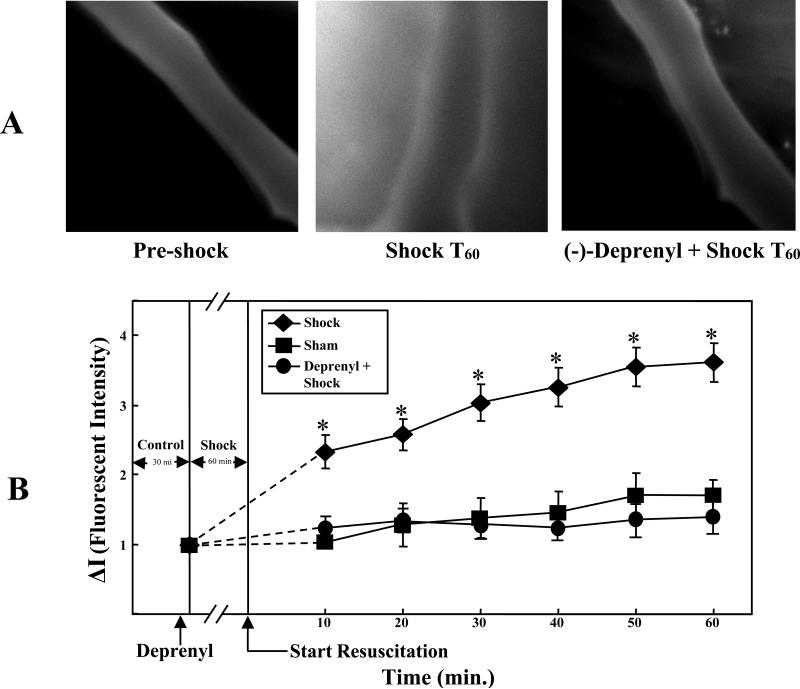Figure 1.
A. (-)-Deprenyl decreases hemorrhagic shock induced vascular hyperpermeability in rat mesentery post-capillary venules. The images of mesenteric post-capillary venules of pre-shock, hemorrhagic shock for 1 hour followed by 60 minutes of resuscitation (Shock T60) and (-)-deprenyl treatment 10 minutes prior to hemorrhagic shock are shown. FITC-albumin extravasation into the extravascular space is observed following hemorrhagic shock where as (-)-deprenyl treatment prevented the extravasation. B. Vascular permeability is expressed as change in fluorescent intensity inside the vessel compared to the intensity outside the vessel. Hemorrhagic shock induces vascular hyperpermeability (FITC-albumin extravasation) compared with sham-control group. (-)-Deprenyl treatment prevents HS-induced hyperpermeability compared with hemorrhagic shock group without (-)-deprenyl treatment. *(p < 0.05; n = 5).

